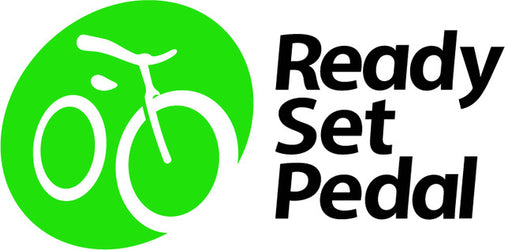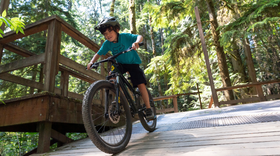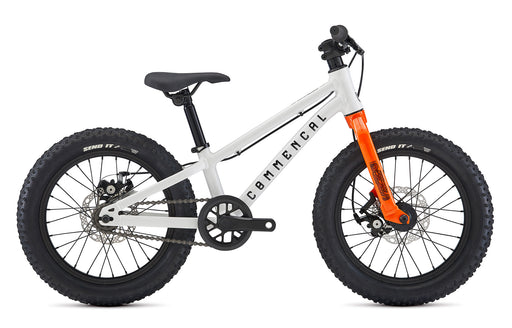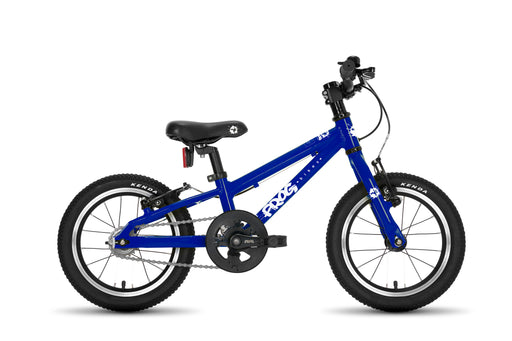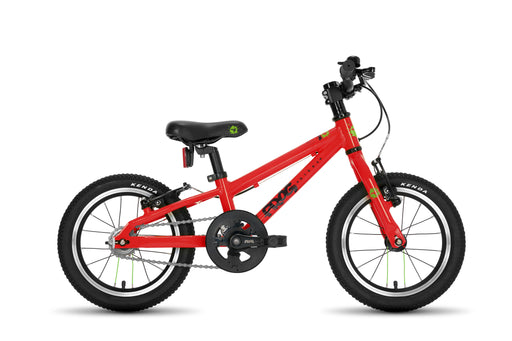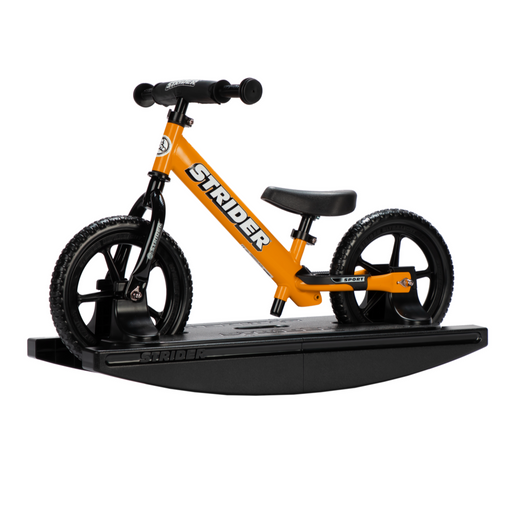You are ready to purchase your child's first pedal bike. How do you know which bike is right for your child? How do you know if it will be the right size?
Here are a couple of factors to consider:
- Bike Fit
- Bike Weight
- Type of Brakes
- Bike Geometry
Bike Fit
Bike Weight
Brakes
There are 2 types of brakes on kids bikes - hand brakes and coaster (or foot) brakes. When a bike has only hand brakes, it means the rear wheel is a Freewheel (meaning you can pedal backwards with no brake).
We recommend the freewheel. When children are learning to pedal, they often pedal backwards by mistake. When they do this with a coaster brake, they slam on the brakes, which can surprise and scare them. With the freewheel, there are no negative consequences to the reverse pedaling and it seems like a faster, easier learning curve to master pedaling. That being said, particularly with a freewheel, we recommend only riding on flat ground until the child has mastered using their hand brakes.
Why do we sell bikes with coaster brakes? US laws requires many of the smaller children's bikes to come standard with the Coaster brakes, so when the child pedals backwards, it engages a brake. Most higher quality kids bikes are now offered with hand brakes, making the coaster brake unnecessary. Some companies are offering a "Freewheel Option" that you can purchase. Some companies offer a higher seat post than necessary so they can send their bikes with the freewheel. Then you can swap out (or cut) the seat post for a shorter one.
Bike Geometry
All of the bicycles we carry have been engineered specifically for children. That being said, there are certainly differences in the geometry. A longer, lower wheel base will ensure a more stable ride that is easier to learn on. A more upright sitting position will appeal to a first time pedaler or a more timid rider. A more forward leaning position will appeal to a more aggressive or confident rider.
Testing has shown most first time pedalers prefer a more upright, comfortable sitting position. Many of the bikes available offer riser handle bars now to accommodate this position.
Training Wheels
Many people grew up learning to ride with training wheels. Times have changed. Now that kids are typically learning to ride balance bikes first, it is usually a very easy transition to pedaling if they are on a well-designed bike. Training wheels can actually be quite dangerous. If a child takes a turn too quickly, the whole bike can tip over. If a training wheel hits a pothole or other divet in the street, this can cause a crash. If a child has already been balancing on their balance bike, we believe it's safer to skip the training wheels.
Here are our favorites first bikes we offer for to ensure pedaling success. They range from 12" - 16" in wheel size.

| Bike | Wheel Size | Bike Weight | Recommended Child Age | Recommended Child Size | Minimum Seat Height | Brakes |
| Frog 40 | 14” | 14.2 | 3-5 yrs | Minimum inseam of 15” | 14.5” | Hand Brakes Only or Hand Brakes with Coaster Brake. |
| Frog 44 | 16" | 14.8 lbs | 4-6 yrs | Min Inseam 19" | 19" | Hand Brakes Only or Hand Brakes with Coaster Brake. |
| ByK E-250 14” | 14” | 15 lbs | 3-5 yrs | 33”-41” | 15.75” | Coaster Brake and Hand Brakes. |
| Mondraker Leader 16 | 16" | 17.6 lbs | 4-6 yrs | 37- 43" Tall | Hand Brakes. | |
| Commencal Ramones 14” | 14” | 15.6 lbs | 3-5 yrs | 37”- 43” tall | 17.5” | Hand Brakes Only. |
| Cleary 16" Hedgehog | 16" | 16 lbs | 4-6 yrs | Inseam 17-22" | 18.9" | Hand Brakes Only. |
| ByK E-350 18" Bike | 18” | 17.5 lbs | 4-6 yrs | 37”-46” tall | 18” | Hand Brakes and Coaster Brake. |
Have questions as you consider which bicycle is right for your child? Give us a call at (970-718-BIKE) or shoot us an email (service@readysetpedal.com). We are always happy to help!
